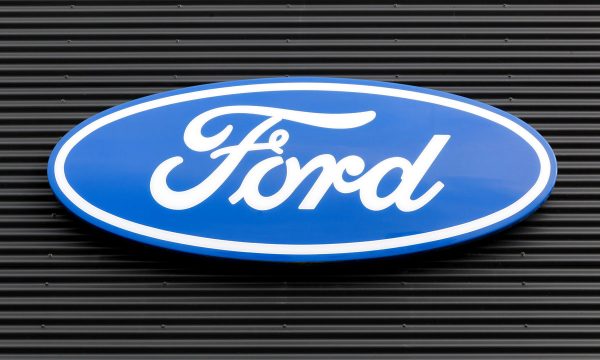A flurry of auto investment announcements is good news for Canada. But are we getting our fair share of the investment pie?
IF THERE WAS NO SUCH thing as the Internet or any other form of news or awareness of the automotive industries of other jurisdictions, one could be persuaded that the Canadian automotive industry is in pretty good shape.
We had record auto sales of 1.85 million in 2014, up 6 per cent from the sales record set in 2013. On the production side, vehicle production in Canada was up 0.5 per cent to 2.38 million units. The industry in Canada was also quite profitable last year.
Ford added 1,000 jobs in 2014 as a result of a $700 million investment in its Oakville assembly plant in late 2013.
Last fall, Honda announced an $857 million investment in its Alliston plant that will allow it to become the global lead for the next generation of Civic.
More recently, at the North American International Auto Show in January, Sergio Marchionne finally confirmed the amount — $2 billion — that would be the amount invested by the new FCA Canada at the Windsor minivan plant to build the next generation minivan, a hybrid version of the same, and potentially a new crossover as well.
Also in January, Guelph-based auto partsmaker Linamar Corp. announced that it would be investing $500 million and adding an additional 1,200 jobs to produce a new line of fuel efficient transmissions.
At the 2015 Canadian International AutoShow GM announced that it would be investing $560 million in its Ingersoll CAMI plant to build the next generation Equinox, while Ford announced that the next iteration of the 600 horsepower, carbon fiber GT super car would be made in Markham, Ont. by Multimatic, a privately held company that was spun off from Magna that specializes in carbon fiber production and aluminum assembly.
And recently, federal Transport Minister, Lisa Raitt was at the Ford plant in Oakville to announce a further 400 jobs being added to facilitate the global roll out of the new Edge.
In isolation, all of these statistics and investment announcements look pretty good — make no mistake, they are.
However, when one compares Canada’s success in earning new investment with the likes of Mexico, it becomes readily apparent that in Canada we are really playing at the fringes of total automotive investment in the NAFTA region.
While the announcement by GM with respect to the Ingersoll plan is great news, what is left unsaid is the concern of those in and around Oshawa who work at GM or work for its suppliers.
With one plant slated to close next year and no product allocated to the plant beyond 2019, it is understandable why there is a certain amount of angst.
Just to put it all in perspective, the Center for Automotive Research in Michigan recently noted that there has not been a new assembly plant in either Canada or the United States since 2009, while there have been seven new plants announced for Mexico.
This, in turn, has resulted in Mexico ramping up its vehicle production to more than 3 million units. At the J.D. Power Talk-Auto Conference in November of 2014, Jeff Schuster, Senior vice-president with LMC Automotive noted that Canadian vehicle production will actually shrink by 100,000 units between 2013 and 2021 while Mexico’s production will increase significantly by 2.46 million units or 82 per cent over that same time period.
U.S. production growth will not be nearly as dramatic as Mexico’s, however, Schuster noted that it will still increase 12 per cent or by 1.39 million units by 2021.
This is Canada’s challenge in the 21st century and 21 years into the NAFTA trade agreement that essentially eliminated tariffs and trade barriers between the three North American countries.
With no indigenous automobile manufacturers, what is the compelling reason for a foreign global vehicle manufacturer — whether American, Japanese or otherwise, to invest in Canada as opposed to the U.S. or Mexico?
Many of Canada’s traditional advantages — public health care, the Auto Pact, a low dollar etc., have been ameliorated over the years.
Even the industry’s proximity in Southern Ontario to the U.S. has been made more difficult through the thickening of the border that has taken place since 9/11, and is only now slowly being thinned out again.
Moreover the U.S. has seen the migration of a significant chunk of its industry to the southern U.S. right-to-work states along with the supplier base that follows the vehicle assemblers.
In this context, it is understandable why Industry Canada and the Ontario Ministry of Economic Development, Employment and Infrastructure are keeping a laser focus on preserving the manufacturing footprint that remains in Ontario.
Nonetheless, what I find encouraging about many of the new investment announcements that have been made is that they stake out some new and different territory that would appear to make these plants a little more bulletproof than they might otherwise be if they were being awarded simply the next product mandate for a particular vehicle.
Take the Ford investment. Ford now appears to be embracing the advantages provided by bi-lateral trade agreements and will now be producing the Edge for the world — or at least 100 contries, as well as producing a diesel variant of the Edge for Europe.
Maybe we’ll be fortunate to get the diesel version in Canada as well. Having a plant producing a product with a global mandate would seem to be a little more secure than simply building a vehicle that is also being built at another plant, to which production could be shifted easily if sales volumes happened to necessitate production adjustment.
We saw that story play out in the not too distant past with Ford and F-150 production that was consolidated elsewhere, despite the fact that it was widely acknowledged that the Oakville Truck Plant had superior product quality and workers.
Likewise, the Honda announcement of $857 million will establish Alliston as the global lead for development of the next generation of Honda Civic.
I would like to think that the fact the Honda Civic has been Canada’s best- selling passenger vehicle for the last 17 years also factored into the decision to bestow this unique opportunity on the Alliston facility.
The Linmar announcement and the Ford/Multimatic investments are the types of investments that perhaps most typify the ones Canada needs to strive for moving into the future.
Both investments take advantage of unique Canadian expertise and skilled human resource capability. Both investments also assist in showcasing to the world’s vehicle manufacturers the capabilities that exist within the Canadian automotive parts and specialty manufacturers. And, indeed, this is part of the problem.
Canada has a lot of skilled people working in some key areas, such as lightweight materials, battery technology and advanced propulsion technology etc. but the global automotive industry remains largely ignorant of their existence.
Therefore, it seems to me that at least part of the solution for securing additional automotive investment in Canada moving into the future should involve showcasing all of these capabilities focused on the automotive industry of the future — to the world.










